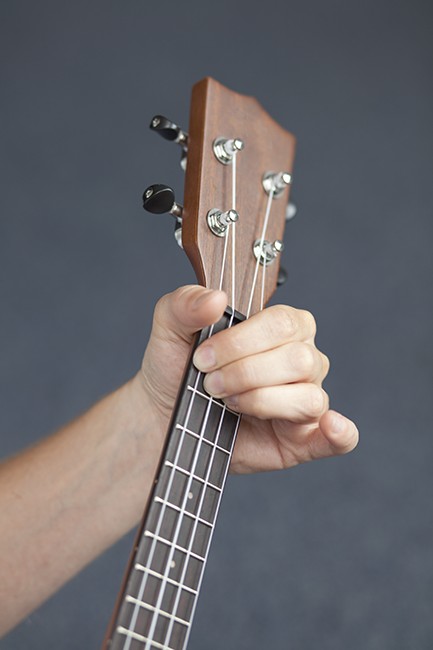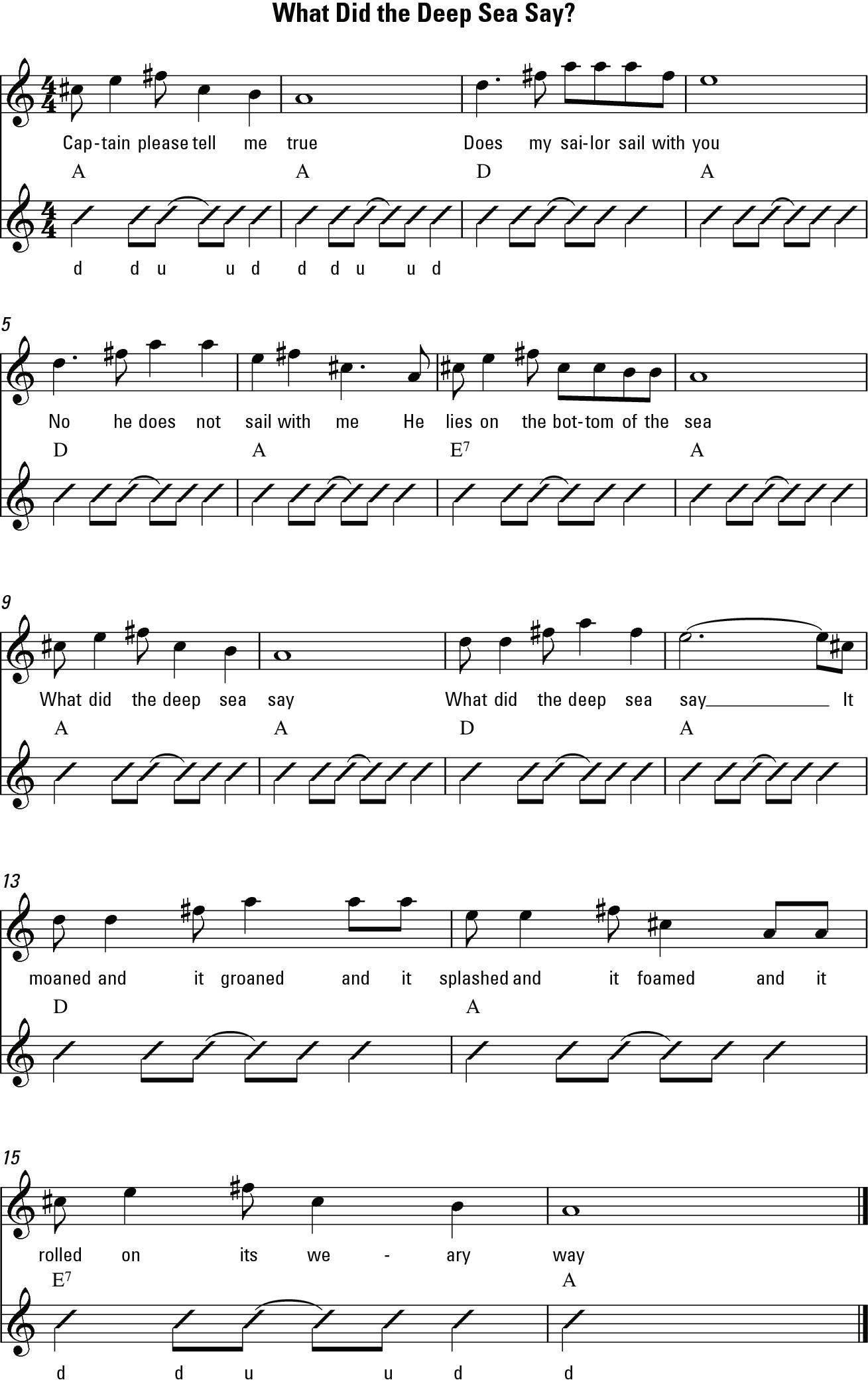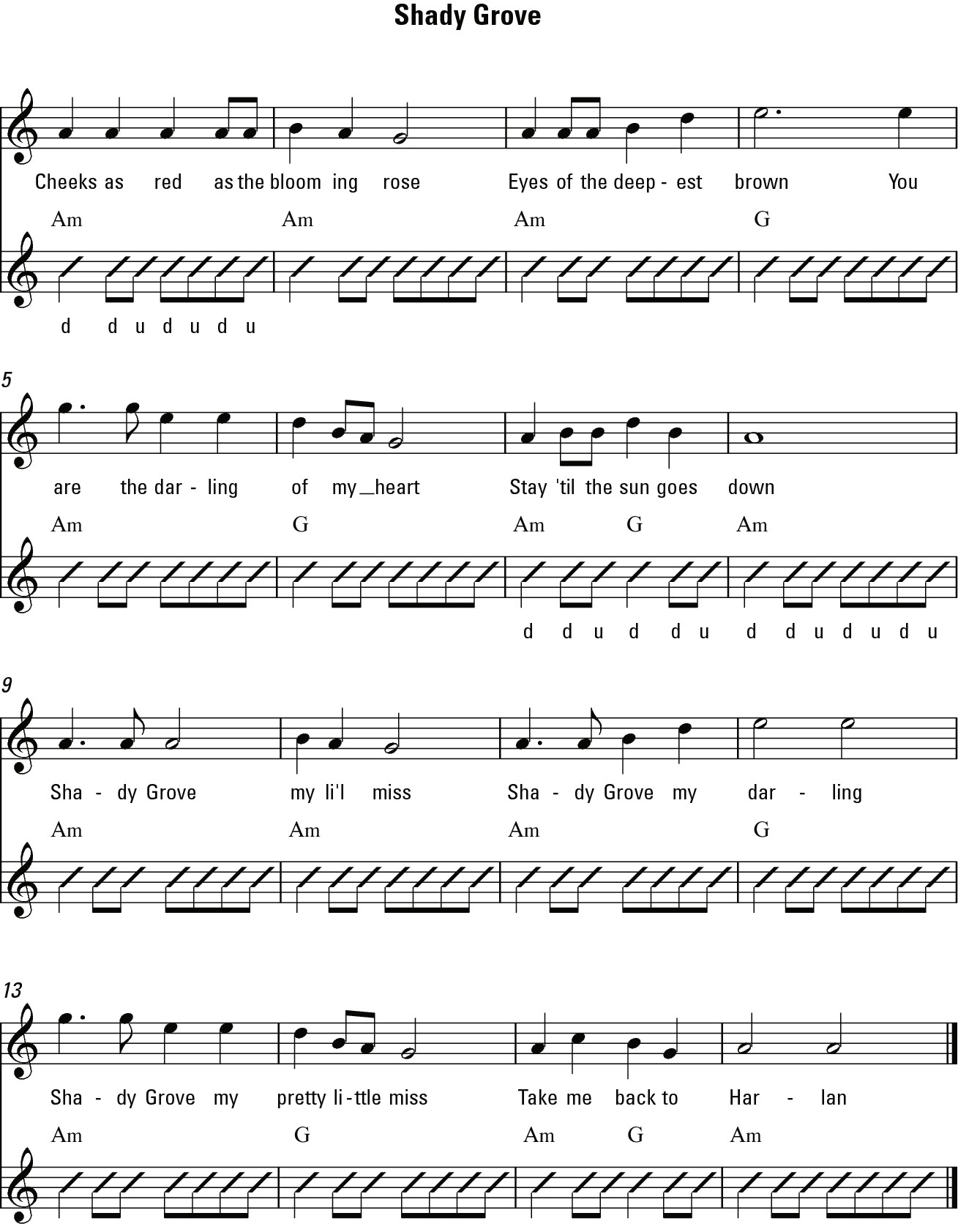Ukulele For Dummies (18 page)
Read Ukulele For Dummies Online
Authors: Alistair Wood

Figure 5-6:
What your fingers look like when playing the D chord.

 Try the new strumming pattern out on a song. See Figure 5-7 for the chord chart for âWhat Did the Deep Sea Say?', and listen to Track 7.
Try the new strumming pattern out on a song. See Figure 5-7 for the chord chart for âWhat Did the Deep Sea Say?', and listen to Track 7.
Figure 5-7:
âWhat Did the Deep Sea Say?' chord chart.

Adding Pep with Some Strumming Variations
This section guides you through some of the little tricks that you may come across in songs, which make them more challenging to play but much more interesting to hear.
Changing chords within bars
Chord changes don't always happen at the beginning of a bar, but often occur in the middle of a bar. You strum this pattern exactly as you would if the chord change wasn't there.
The folk song âShady Grove'
illustrates this technique perfectly. Through most of the song you use the strumming pattern shown in Figure 5-8.
Figure 5-8:
âShady Grove' strumming notation.

But one bar in the song is half an Am chord (which I introduce in Chapter 4) and half G, which is strummed as shown in Figure 5-9. (For how to play the G chord, take a look at the later section âIntroducing the time signature'.)
Figure 5-9:
Half bar strumming notation.

 So you play Am and strum down, down-up. Then you strum down, down-up on G as shown in Figure 5-10, which relates to Track 8.
So you play Am and strum down, down-up. Then you strum down, down-up on G as shown in Figure 5-10, which relates to Track 8.
Figure 5-10:
âShady Grove' chord chart.

 Using your index finger to fret the Am chord (instead of your middle finger) makes changing between Am and G easier.
Using your index finger to fret the Am chord (instead of your middle finger) makes changing between Am and G easier.
Strumming strongly and weakly
As well as varying the rhythm to add interest to your strums, you can also change the strum's strength and turn a boring strum into something much more entertaining.
 Have a listen to the very boring continuous down-up strum in the first half of Track 9. Now compare it to the second half. The down-up strum is the same, but this time a weak down-up is followed by a strong down-up.
Have a listen to the very boring continuous down-up strum in the first half of Track 9. Now compare it to the second half. The down-up strum is the same, but this time a weak down-up is followed by a strong down-up.
This change in the strength of the strums is called
dynamics
, one of the most effective and underused methods of making your strums more interesting.
In notation, strong strums are shown in capital letters. Figure 5-11 shows how the strumming in Track 9 is notated.
Figure 5-11:
Strong strumming notation.

Introducing the time signature
Every song has what's known as a
time signature
, which indicates the number of beats that a song has in one bar.
All the songs I use in Chapter 4 and so far in this section are in
4/4 time
(spoken as âfour four time'), which is to say that these songs have four beats in every bar. But that's not always the case: for example,
3/4 time
is also common.
When written down, the time signature of a piece is indicated at the beginning. If you're eagle-eyed you'll have noticed something at the beginning of the chord charts (see Figure 5-12): this sign indicates 4/4 time.
Figure 5-12:
4/4 time notation.
